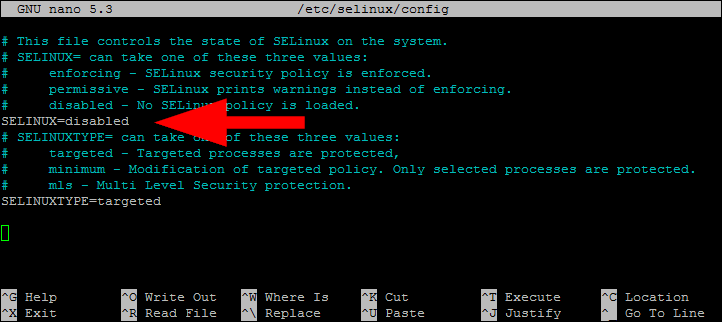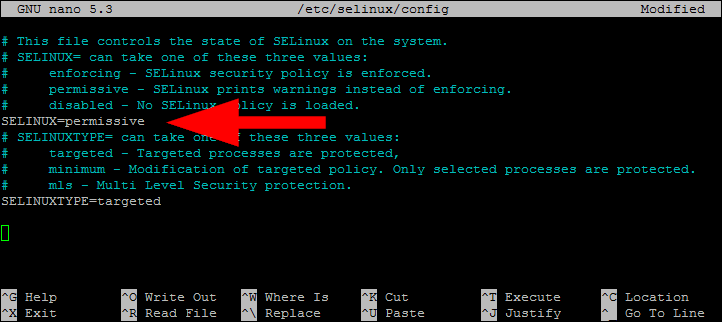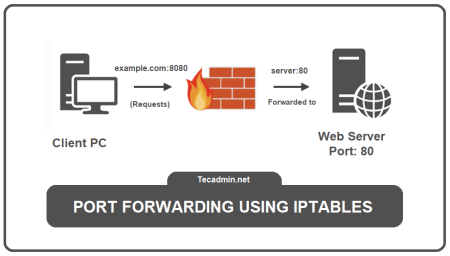SELinux (Security-Enhanced Linux) is a Linux kernel security module that provides enhanced security for Linux systems. SELinux provides a mechanism for supporting access control security policies. This specifies how the processes communicate with each other and interact with the files.
It’s not a good practice to disable SELinux on a system, especially on production servers. For developer systems, you can disable it only if facing issues due to its policies.
You may also like:
- A Practical Introduction to SELinux for Beginner Linux Users
- How to Configure SELinux for Apache New Directory Serving
In this how-to-guide, you will learn to disable SELinux on a CentOS 9/8 or RHEL 9/8 Linux system.
SELinux Modes
SELinux has three modes to run as described below. The default SELinux runs in Enforcing mode on a CentOS or RHEL Linux system.
- Enforcing: SELinux security policy is enforced.
- Permissive: SELinux allows access but prints warnings on rules violations.
- Disabled: No SELinux policy is loaded.
In this article, we will discuss how to change SELinux mode to permissive or disable it completely on a CentOS and RedHat Linux system.
Check SELinux Status
You can use getenforce command to view the status of SELinux. Another command sestatus gives you more details about SELinux status.
Press CTRL + ALT + T to launch a terminal and type:
sestatus
You will see the output like:
SELinux status: enabled
SELinuxfs mount: /sys/fs/selinux
SELinux root directory: /etc/selinux
Loaded policy name: targeted
Current mode: enforcing
Mode from config file: enforcing
Policy MLS status: enabled
Policy deny_unknown status: allowed
Memory protection checking: actual (secure)
Max kernel policy version: 33
The above status shows that SELinux is enabled and enforcing.
Disable SELinux on CentOS/RHEL
Update the SELinux configuration file and set SELINUX=disabled to permanently disable the SELinux on your system. This will completely disable all the SELinux context.
sudo nano /etc/selinux/config
Set SELINUX value to disabled:
SELINUX=disabled

Reboot your instance to apply changes.
You can again activate the SELinux by setting SELINUX=enforcing in configuration file. Instead of disabling SELinux, you can set it to permissive mode.
Set SELinux to Permissive Mode (Temporary)
The permissive mode means the SELinux policy is not enforced. SELinux does not deny any operations even they do policy violations. It only creates logs, which is helpful for debugging.
You can set the SELinux in permissive mode temporarily by using one of the below commands.
sudo setenforce 0
sudo setenforce Permissive
Once the system rebooted, the temporary mode will be disabled and SELinux will again in enforcing. Use the next method to apply changes permanently.
Set SELinux in Permissive Mode (Permanent)
You can also Configure SELinux Permissive Mode Permanently by editing the configuration file. Edit the configuration in in your favorite text edit:
sudo nano /etc/selinux/config
Set the SELINUX value to permissive.
SELINUX=permissive

Save your file and close. Then reboot your system to apply changes.
Concusion
In this guide, we explored how to permanently disable SELinux or switch it to permissive mode on CentOS 9/8 or RHEL 9/8 Linux systems. This tutorial provided step-by-step instructions to ensure your system’s security settings meet your specific needs, offering flexibility in managing SELinux policies for enhanced system administration.
You can read more about SELinux on its official site: What is SELinux?

